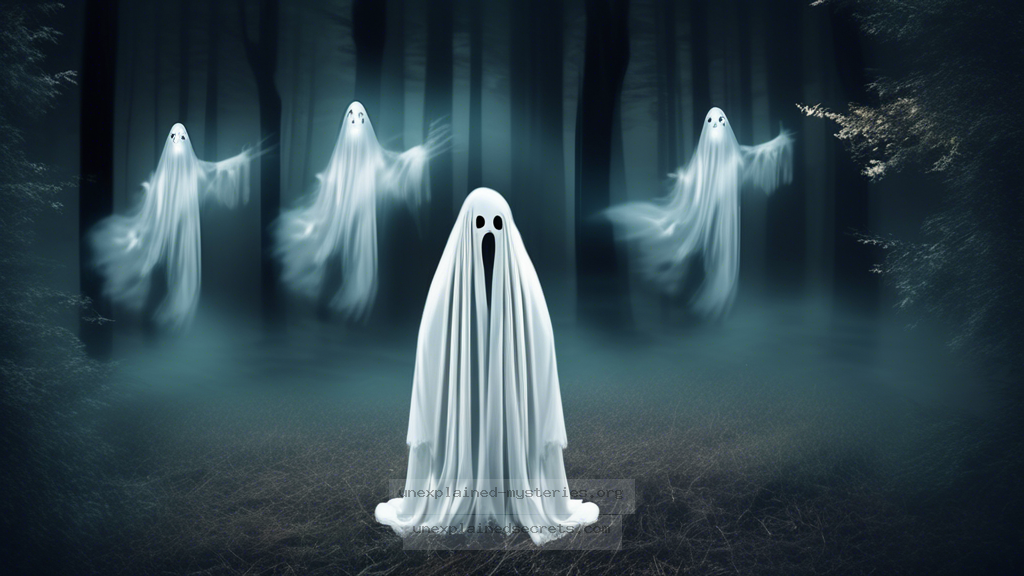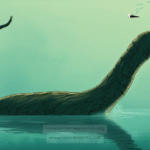What Do Ghost Sightings Reveal About the Nature of Reality?
What Do Ghost Sightings Reveal About the Nature of Reality?
Ghost sightings have fascinated humanity for centuries, evoking a blend of fear, curiosity, and skepticism. But what if these spectral encounters are more than just figments of the imagination? What if they reveal deeper truths about our reality? This question matters profoundly as it challenges our understanding of life, death, and what exists beyond our physical world. In this blog post, we will navigate through the enigmatic realm of ghost sightings, exploring their historical context, core theories, practical implications, and the future of paranormal research.
The Historical Context of Ghost Sightings
Ghost sightings have been documented throughout history, from ancient civilizations to modern times. In ancient Egypt, for instance, the concept of the afterlife was intricately linked to the belief in spirits or “ka” that could linger among the living. Similarly, the Greeks and Romans had their own tales of specters haunting the living, often seeking revenge or closure.
In medieval Europe, ghost sightings often took on a religious significance, with many believing that apparitions were souls in purgatory seeking prayers for their release. The infamous “Bell Witch” haunting in early 19th-century America is a prime example of how ghostly encounters can lead to societal upheaval, public intrigue, and even skepticism regarding the unseen forces at play.
Today, ghost sightings continue to be reported worldwide, from haunted houses to historic battlefields. These occurrences often lead to investigations by paranormal enthusiasts and researchers, fueling an ongoing debate about their authenticity and implications for understanding human consciousness and the afterlife.
Core Concepts: What Are Ghosts?
The term “ghost” typically refers to the spirit or soul of a deceased person that appears to the living. However, the definition can vary significantly across cultures and belief systems. Here are a few core concepts surrounding ghost phenomena:
- Apparitions: Visual manifestations of spirits, often described as translucent or shadowy figures.
- Residual Hauntings: Occurrences where a spirit seemingly repeats a past event, often lacking awareness of the living.
- Intelligent Spirits: Entities believed to be aware of their surroundings and capable of interaction with the living.
- Poltergeist Activity: Manifestations involving physical disturbances, such as objects moving or unexplained noises.
Understanding these concepts is essential for any investigation into ghost sightings, as it helps delineate the types of encounters one might experience and the theories that might explain them.
Practical Implications: Evidence and Investigation
To study ghost sightings effectively, researchers employ various methodologies. These can include:
- Eyewitness Accounts: Documenting personal experiences to gather qualitative data.
- Video and Audio Recording: Utilizing technology to capture evidence—be it orbs, EVPs (Electronic Voice Phenomena), or visual anomalies.
- Environmental Monitoring: Measuring electromagnetic fields, temperature fluctuations, and other physical anomalies that may accompany sightings.
💡 Tip: Always approach ghost investigations with skepticism and an open mind. Document everything meticulously to maintain a clear record of events.
One of the most notable cases is that of the “Ghost Hunters” TV show, which has popularized the use of thermal imaging and audio recording to capture potential ghostly evidence. However, the validity of such evidence often sparks debate, as skeptics argue that many phenomena can be explained through natural causes.
Alternative Perspectives: Skepticism vs. Belief
The landscape of ghost sightings is rife with contrasting perspectives. On one hand, believers argue that ghost sightings offer a glimpse into the afterlife, providing comfort to those mourning loved ones. On the other hand, skeptics argue that psychological factors, such as pareidolia, suggestibility, and confirmation bias, can lead individuals to misinterpret ordinary experiences as supernatural events.
Research in psychology suggests that ghost sightings may often be linked to environmental factors such as infrasound (low-frequency sound waves) or carbon monoxide poisoning, which can induce feelings of unease and visual hallucinations. This raises crucial questions about the reliability of human perception in ghostly encounters.
Common Misconceptions About Ghost Sightings
Numerous misconceptions surround ghost sightings that can cloud judgment and understanding. Here are a few:
- All Ghosts Are Malevolent: Many associate ghosts with malevolence, but numerous accounts depict friendly or benign spirits.
- Ghosts Only Appear at Night: Sightings can occur during the day; the belief that ghosts are nocturnal stems from cultural narratives rather than evidence.
- All Ghosts Are Human: Some cultures believe in animal spirits or other entities that can manifest, expanding the definition of “ghost.”
⚠️ Warning: Relying solely on anecdotal evidence can lead to misconceptions about the nature of ghostly encounters. Always seek out diverse perspectives.
Best Practices for Investigation or Study
For those interested in investigating ghost sightings, it is essential to follow best practices to ensure a thorough and respectful approach. Here are some recommendations:
- Respect the Site: Always obtain permission to investigate, particularly in private homes or sacred sites.
- Document Everything: Keep detailed records of observations, equipment used, and conditions present during investigations.
- Stay Objective: Maintain a skeptical mindset to avoid jumping to conclusions based on emotional responses.
- Collaborate: Work with others in the field to share insights and validate findings.
Engaging in ghost investigations can be a deeply personal and often enlightening journey. By adhering to these best practices, researchers can contribute to a more comprehensive understanding of the phenomena.
Future Developments and Ongoing Research
The field of paranormal research is evolving, with advancements in technology and methodologies opening new avenues for exploration. The use of artificial intelligence and machine learning is increasingly being applied to analyze data from ghost sightings, potentially revealing patterns that were previously overlooked.
Moreover, interdisciplinary approaches incorporating psychology, neuroscience, and cultural studies are gaining traction, providing a more holistic view of ghost phenomena. This shift could lead to exciting new insights into the nature of consciousness and what might lie beyond our physical existence.
Real-World Examples of Documented Ghost Sightings
Numerous documented cases of ghost sightings have been reported, ranging from the mundane to the extraordinary. Here are a few notable examples:
- The Amityville Horror: A case that became infamous in the 1970s, involving a family reportedly tormented by supernatural forces in their home.
- The Winchester Mystery House: A California mansion known for its architectural oddities, claimed to be haunted by the spirits of those killed by Winchester rifles.
- The Tower of London: A historical site with a long history of ghost sightings, including that of Anne Boleyn, whose spirit is said to roam the grounds.
These cases illustrate the varied and often complex nature of ghost sightings, highlighting the interplay between culture, belief, and individual experience.
Conclusion: The Nature of Reality Through Ghost Sightings
In conclusion, ghost sightings serve as a profound lens through which we can explore the nature of reality itself. They bridge the gap between the known and the unknown, encouraging us to question our understanding of life, death, and consciousness. As we continue to investigate these mysterious phenomena, we must remain open-minded yet skeptical, balancing belief with rigorous inquiry. The quest to understand the meaning behind ghost sightings may ultimately lead us to deeper truths about existence, reality, and the human experience.
Other Articles
Recent Posts
- What Happened to Flight MH370? The Conspiracy Theories That Still Haunt Us
- What Secrets Lurk Within the Walls of the Infamous Trans-Allegheny Lunatic Asylum?
- What Evidence Supports the Existence of Bigfoot in the Pacific Northwest?
- What Happened to the Indus Valley Civilization? Unraveling the Mysteries of Ancient Urban Life
- Can Telepathy Be Scientifically Proven Through Laboratory Evidence?







